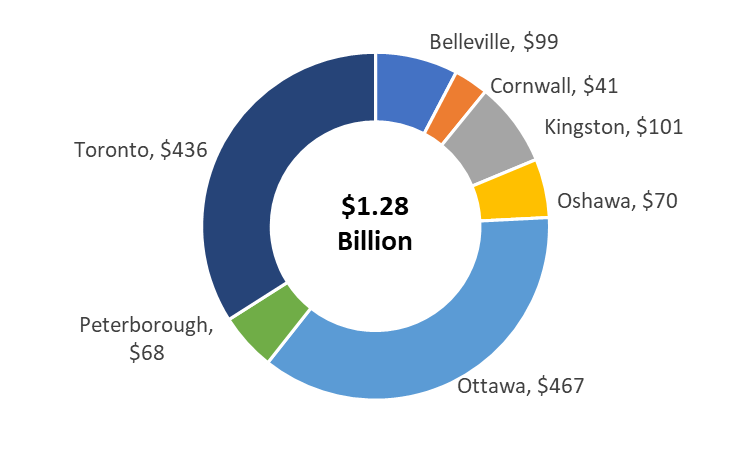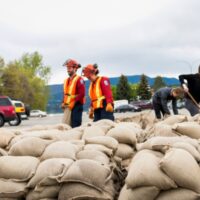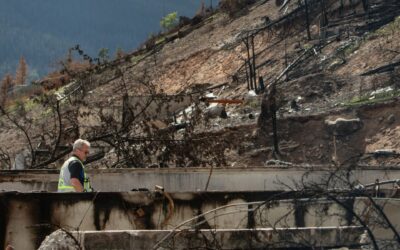With much of the country’s forests ablaze in June, a thick haze of wildfire smoke blanketed much of Canada’s population. A fire season like no other had erupted, making very real and immediate the dangers of a changing climate. No longer was climate change a distant and diffuse threat, but rather a very personal experience for millions of Canadians.
Here at the Institute, we have been studying the costs of climate change for several years. Our 2022 report, Damage Control, identified 15 impact areas that are slowing Canada’s economy, eroding household and business wealth, and jeopardizing long-term prosperity. While we did look at the health impacts of a changing climate, due to data limitations, Damage Control did not forecast the air quality implications of forest fires for people in Canada.
This blog uses real time air quality data to estimate the cost of the Quebec forest fires that covered Ontario in smoke from June 4 through June 8. We focus on Ontario given the availability of real time air quality monitoring data.
The health costs are eye popping
Using an approach that relates changes in ambient air quality to human exposure and subsequently to adverse health outcomes, we estimate the health cost of forest fires between June 4-8 to be $1.28 billion in Ontario alone. Let’s unpack this.
Real time air quality data from June 4-8 indicates PM2.5 exposure, a major determinant of premature mortality (death) and respiratory illness, spiked considerably in Ontario. For example, the five day 24-hour PM2.5 average for Ottawa for the June 4-8 event is 79.3 ug/m3 or 13 times the annual average from the monitoring station. Similar data is available for major population centres in Ontario that were significantly impacted by forest fires covering about 58 per cent of Ontario’s population or close to 9 million people.
The health impact of fine particulates is well established, with the science indicating numerous health impacts experienced at any level of exposure including premature mortality, an increase in child bronchitis and heart attacks, and more hospital room visits due to asthma attacks. Health Canada’s Quality Benefits Assessment Tool (AQBAT) quantifies and values health impacts for 8 health outcomes associated with PM2.5 exposure.
Figure 1: Health costs by census division (millions)

We use AQBAT to estimate the health cost of the wildfire event by transforming the five-day average PM2.5 level during the five-day period for seven large population centres in Ontario into a change in the annual concentration of PM2.5. This is then applied to each of the seven population centres to provide an estimate of health costs of the June wildfire event.
This gives us the estimate of the wildfires’ effect on health outcomes of $1.28 billion for June 4-8.
Other costs not included would be additional including ecological damages, business disruption, the costs of fighting the fires, household costs to avert some of the impacts of PM2.5 on indoor air quality, lost tourism, and costs associated with restricting recreational activities for our kids.
Some can continue to argue that climate change is somebody else’s problem, and that Canada is a small global player, and there’s not much we can do. Such an attitude is foolhardy, ignoring climate science and keeps us from addressing impacts, literally fiddling while the boreal forest burns and chokes us with smoke.








